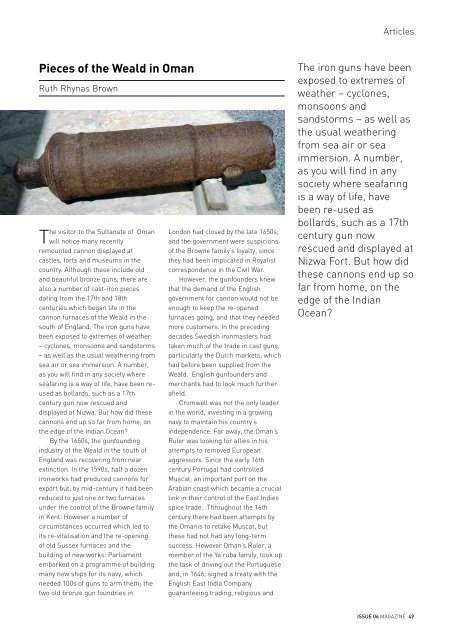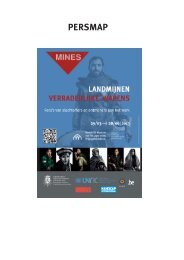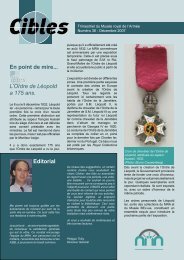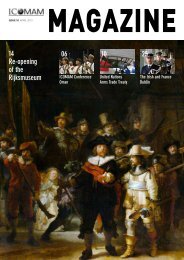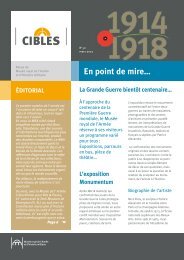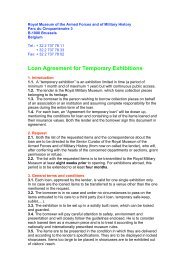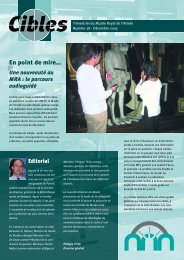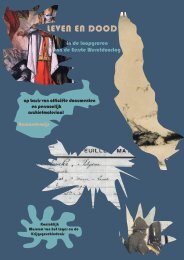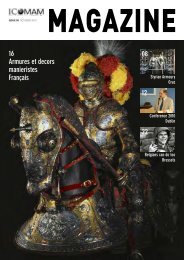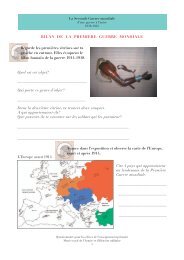Download issue 06 (High resolution) April 2011 (PDF, 3,9 MB)
Download issue 06 (High resolution) April 2011 (PDF, 3,9 MB)
Download issue 06 (High resolution) April 2011 (PDF, 3,9 MB)
Create successful ePaper yourself
Turn your PDF publications into a flip-book with our unique Google optimized e-Paper software.
Articles<br />
Pieces of the Weald in Oman<br />
Ruth Rhynas Brown<br />
The visitor to the Sultanate of Oman<br />
will notice many recently<br />
remounted cannon displayed at<br />
castles, forts and museums in the<br />
country. Although these include old<br />
and beautiful bronze guns, there are<br />
also a number of cast-iron pieces<br />
dating from the 17th and 18th<br />
centuries which began life in the<br />
cannon furnaces of the Weald in the<br />
south of England. The iron guns have<br />
been exposed to extremes of weather<br />
– cyclones, monsoons and sandstorms<br />
– as well as the usual weathering from<br />
sea air or sea immersion. A number,<br />
as you will find in any society where<br />
seafaring is a way of life, have been reused<br />
as bollards, such as a 17th<br />
century gun now rescued and<br />
displayed at Nizwa. But how did these<br />
cannons end up so far from home, on<br />
the edge of the Indian Ocean<br />
By the 1650s, the gunfounding<br />
industry of the Weald in the south of<br />
England was recovering from near<br />
extinction. In the 1590s, half a dozen<br />
ironworks had produced cannons for<br />
export but, by mid-century it had been<br />
reduced to just one or two furnaces<br />
under the control of the Browne family<br />
in Kent. However a number of<br />
circumstances occurred which led to<br />
its re-vitalisation and the re-opening<br />
of old Sussex furnaces and the<br />
building of new works: Parliament<br />
embarked on a programme of building<br />
many new ships for its navy, which<br />
needed 100s of guns to arm them; the<br />
two old bronze gun foundries in<br />
London had closed by the late 1650s;<br />
and the government were suspicions<br />
of the Browne family’s loyalty, since<br />
they had been implicated in Royalist<br />
correspondence in the Civil War.<br />
However, the gunfounders knew<br />
that the demand of the English<br />
government for cannon would not be<br />
enough to keep the re-opened<br />
furnaces going, and that they needed<br />
more customers. In the preceding<br />
decades Swedish ironmasters had<br />
taken much of the trade in cast guns,<br />
particularly the Dutch markets, which<br />
had before been supplied from the<br />
Weald. English gunfounders and<br />
merchants had to look much further<br />
afield.<br />
Cromwell was not the only leader<br />
in the world, investing in a growing<br />
navy to maintain his country’s<br />
independence. Far away, the Oman’s<br />
Ruler was looking for allies in his<br />
attempts to removed European<br />
aggressors. Since the early 16th<br />
century Portugal had controlled<br />
Muscat, an important port on the<br />
Arabian coast which became a crucial<br />
link in their control of the East Indies<br />
spice trade. Throughout the 16th<br />
century there had been attempts by<br />
the Omanis to retake Muscat, but<br />
these had not had any long-term<br />
success. However Oman’s Ruler, a<br />
member of the Ya’ruba family, took up<br />
the task of driving out the Portuguese<br />
and, in 1646, signed a treaty with the<br />
English East India Company<br />
guaranteeing trading, religious and<br />
The iron guns have been<br />
exposed to extremes of<br />
weather – cyclones,<br />
monsoons and<br />
sandstorms – as well as<br />
the usual weathering<br />
from sea air or sea<br />
immersion. A number,<br />
as you will find in any<br />
society where seafaring<br />
is a way of life, have<br />
been re-used as<br />
bollards, such as a 17th<br />
century gun now<br />
rescued and displayed at<br />
Nizwa Fort. But how did<br />
these cannons end up so<br />
far from home, on the<br />
edge of the Indian<br />
Ocean<br />
ISSUE <strong>06</strong> MAGAZINE 49


